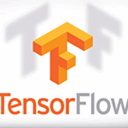Unlocking Innovation: Top PyTorch Alternatives for Machine Learning
PyTorch is a powerful and popular open-source machine learning framework, renowned for its flexibility, dynamic computation graph, and extensive ecosystem. It enables fast, flexible experimentation and efficient production through a hybrid front-end, distributed training, and an ecosystem of tools and libraries. However, even with its strengths, developers and researchers often seek a PyTorch alternative for various reasons, including specific project requirements, preferred programming languages, performance needs, or a desire for different community support. This article explores some of the best alternatives to PyTorch, offering diverse features and capabilities for your AI and machine learning endeavors.
Top PyTorch Alternatives
While PyTorch excels in many areas, the machine learning landscape is rich with innovative frameworks. Here's a curated list of top contenders that can serve as excellent PyTorch alternatives, each bringing unique strengths to the table.

TensorFlow
TensorFlow is an open-source software library for machine learning developed by Google. It's a comprehensive ecosystem of tools, libraries, and community resources that lets researchers push the state-of-the-art in ML and developers easily build and deploy ML-powered applications. As a free and open-source platform available on Mac and Linux, it's a robust PyTorch alternative for tasks involving artificial intelligence and machine learning, particularly for large-scale deployment and production environments.

MXNet
MXNet is a deep learning framework designed for both efficiency and flexibility. It allows you to mix symbolic and imperative programming to maximize efficiency and productivity. This makes it a strong PyTorch alternative, especially for those who appreciate a blend of programming paradigms. Available for free and open-source use on Mac, Windows, and Linux, MXNet features strong support for machine learning tasks and Python integration.

PyCaret
PyCaret is an open-source, low-code machine learning library in Python that aims to reduce the hypothesis to insights cycle time in an ML experiment. It enables data scientists and analysts to perform end-to-end machine learning experiments with ease. As a free and open-source PyTorch alternative, PyCaret simplifies complex machine learning workflows across Mac, Windows, and Linux, making it ideal for rapid prototyping and deployment for users leveraging Python.

SerpentAI
Serpent.AI is a simple yet powerful, novel framework to assist developers in the creation of game agents. It allows users to turn any video game into a sandbox environment ripe for machine learning and AI experimentation. As a free and open-source platform compatible with Mac, Windows, and Linux, SerpentAI offers a unique PyTorch alternative for those interested in artificial intelligence, bots, and gaming applications, providing a specialized environment for interactive AI development.

Deeplearning4j
Deeplearning4j is an enterprise-scale, open-source, distributed deep-learning library written for Java and Scala. It's designed to be used in business environments, providing a robust framework for machine learning tasks. For Java and Scala developers, Deeplearning4j stands out as a compelling PyTorch alternative, offering extensive features for machine learning across Mac, Windows, and Linux platforms, making it suitable for large-scale, production-grade applications.
Choosing the right machine learning framework depends heavily on your specific project needs, existing technology stack, and personal preferences. While PyTorch remains a stellar choice for many, exploring these excellent PyTorch alternatives can open up new possibilities and provide better alignment with your development goals. Evaluate their features, community support, and deployment capabilities to find the best fit for your next AI or machine learning endeavor.